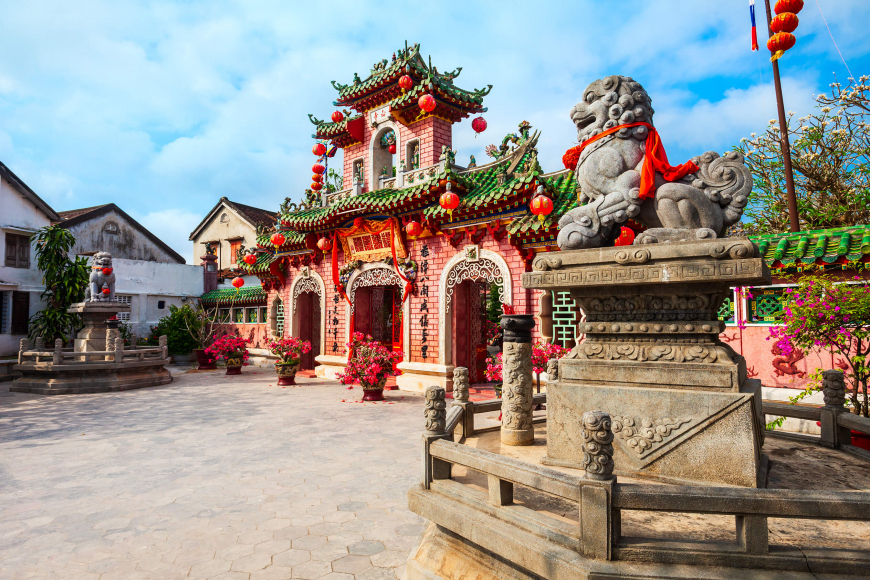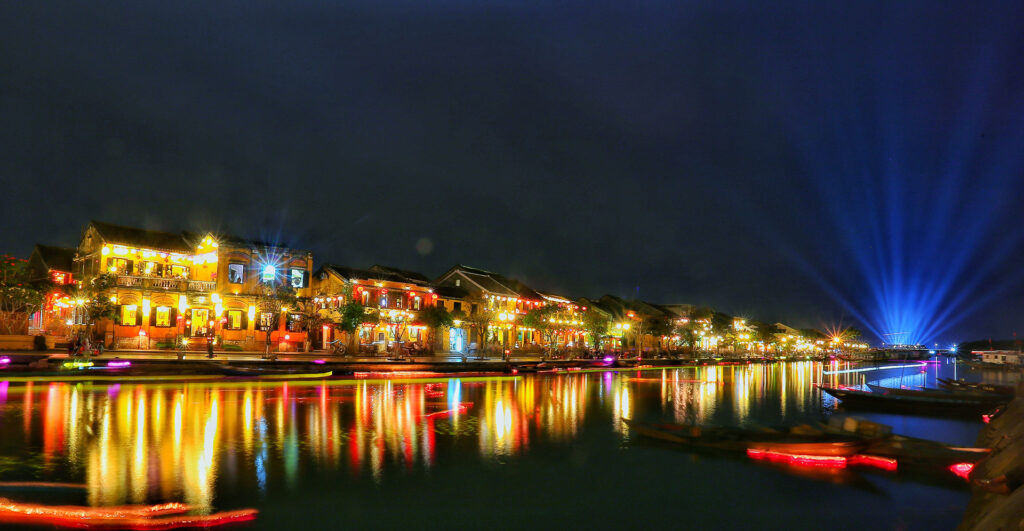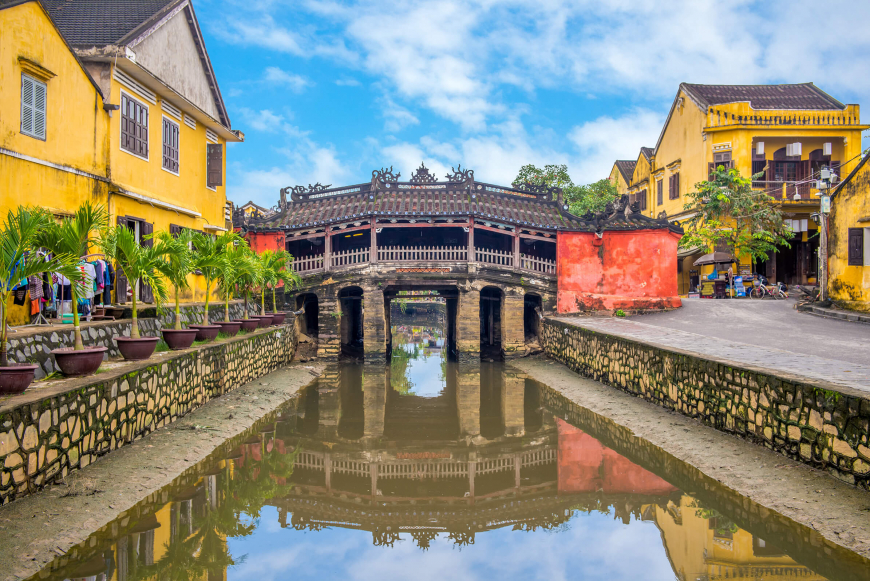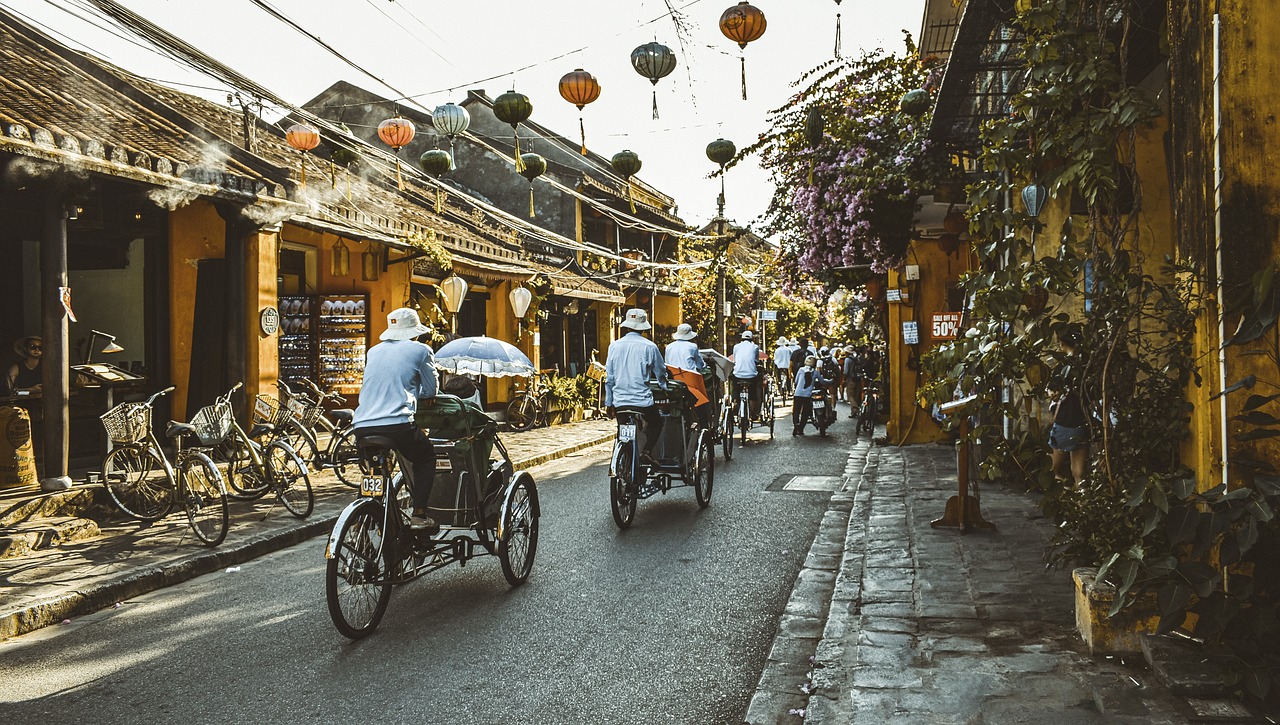Hoi An is more than just a charming coastal city. It is a living museum of Vietnam’s rich and diverse heritage, shaped by over 2000 years of trade and cultural exchange. From a small trading post of the Sa Huynh culture in the 2nd century, Hoi An rose to become a major port of the Hindu Cham Kingdom, a settlement for Chinese merchants and soldiers from the Ming Dynasty, and a hub for international commerce between the Arab, European, and Asian worlds. Today, Hoi An preserves its ancient architecture and urban planning as a UNESCO World Heritage Site, where visitors can experience the fusion of Cham, Vietnamese, Chinese, Japanese, and European influences in every corner.

Hoi An’s Old Town is the heart and soul of the city. Unlike other historical sites that feel frozen in time, the Old Town is vibrant and authentic, where locals still live and work in their ancestral homes and shops. The Old Town is painted in a warm yellow hue, adorned with colorful lanterns and bougainvillea flowers. The narrow streets are lined with wooden houses and quaint storefronts that sell everything from silk to spices. The Thu Bon River flows along the Old Town, where you can see traditional boats and modern cruises coexist. The Old Town is especially enchanting at night when the lanterns light up the streets and the riverfront.

One of the most iconic landmarks of the Old Town is the Japanese Bridge, which dates back to the 16th century. The bridge was built by the Japanese community to connect with the Chinese quarter across the river. It is also unique for having a Buddhist temple inside it. The bridge symbolizes Hoi An’s multicultural heritage and is featured on the 20,000 VND note.

Another way to explore Hoi An’s history and culture is through its ancient houses and assembly halls. These buildings showcase the architectural styles and traditions of different ethnic groups that settled in Hoi An over the centuries. Tan Ky House is one of the most famous examples. It was built in the 18th century by a wealthy merchant family and has been passed down for seven generations. The house is decorated with exquisite antiques and carvings that reflect Chinese, Japanese, and Vietnamese influences. You can visit Tan Ky House on your own or join a tour to learn more about its history and symbolism.
The assembly halls are communal spaces and places of worship for various Chinese clans that migrated to Hoi An. The most impressive one is the Phuc Kien Assembly Hall, which was founded in the 17th century by Fujianese traders. The hall is dedicated to Thien Hau, the goddess of the sea, who protects sailors and fishermen. The hall features elaborate statues, altars, and murals depicting Chinese mythology and folklore. You can also see locals praying for fertility and prosperity at the hall.
If you want to dive deeper into Hoi An’s past, you can visit one of its many museums. The Museum of History and Culture gives you an overview of Hoi An’s development from prehistoric times to modern days. The Museum of Trade Ceramics displays pottery from different countries that traded with Hoi An in ancient times. The Museum of Folklore showcases traditional costumes, musical instruments, and puppetry of Hoi An’s folk culture.
Hoi An: A Haven for Wellness Seekers Hoi An is not only a destination for history buffs and culture lovers. It is also a place where you can relax and rejuvenate your body and mind. Hoi An offers a variety of wellness activities that suit every taste and budget. You can learn new skills at cooking classes or handicraft workshops, enjoy nature at the beach or on Cam Nam Island, or pamper yourself at one of the many spas and resorts in town.
If you are looking for luxury accommodation with wellness facilities, you have plenty of options in Hoi An. Sunrise Hoi An Resort is located on Cua Dai Beach, where you can have your own private beach access as well as massages, yoga classes, tennis courts, and a hot tub. The rooms have ocean or garden views that make you feel close to nature.

Anantara Hoi An Resort is another great choice if you prefer river views over sea views. The resort has colonial-style rooms with private porches overlooking the Thu Bon River or the hotel garden. You can start your day with a swim in the pool before heading to the spa, steam room, or hammam. The resort also offers cultural activities such as Chinese painting and lantern-making workshops.
For the ultimate indulgence, book a villa at The Four Seasons Hoi An – The Nam Hai – where you can enjoy spacious rooms with walk-in closets and rain-shower bathrooms. The resort has three swimming pools, a library, a watersports center, and a spa. You can also request a private retreat with your own butler service.
Hoi An is a city that will captivate you with its beauty and charm. Whether you are interested in its history or wellness offerings, you will find something to love in this ancient port city.





